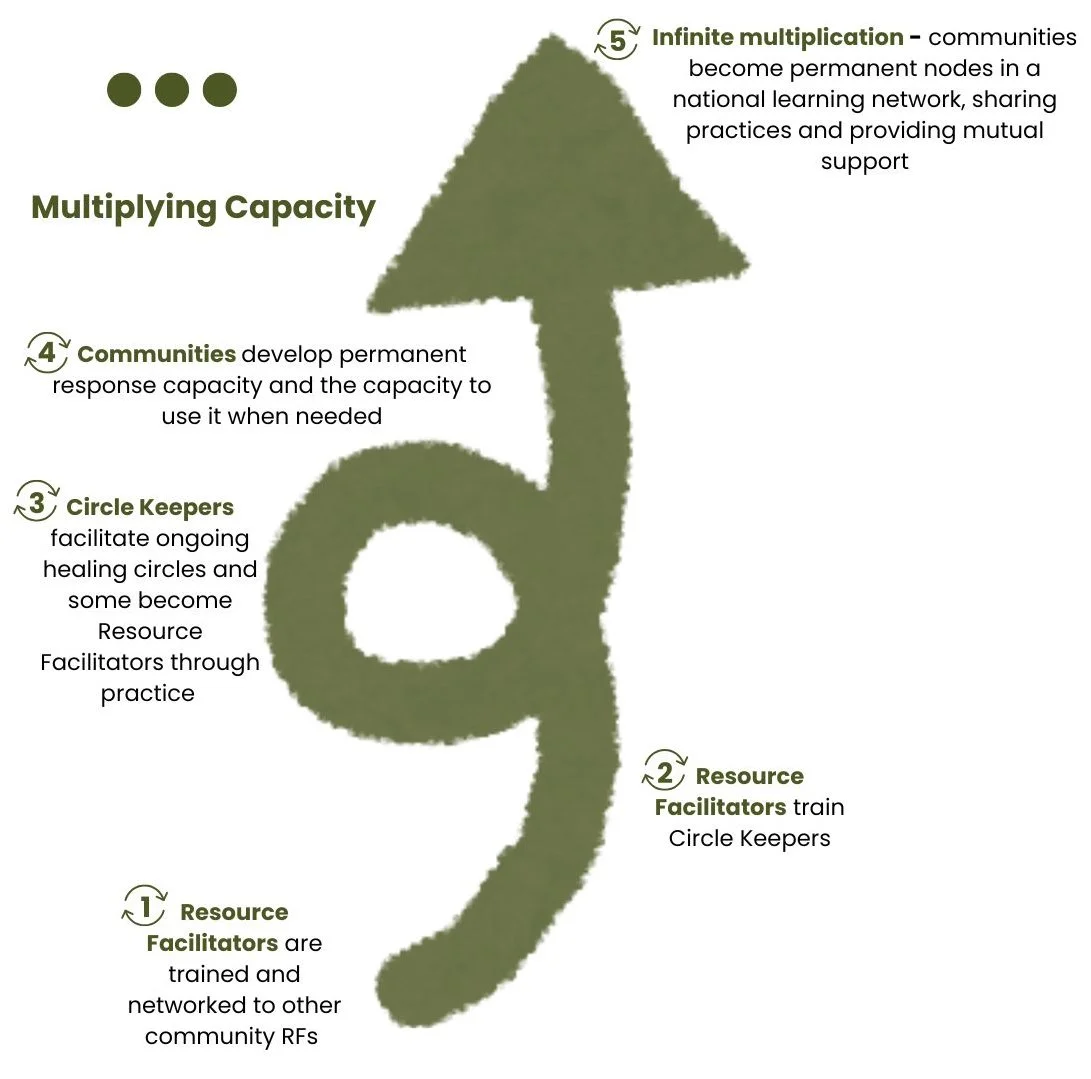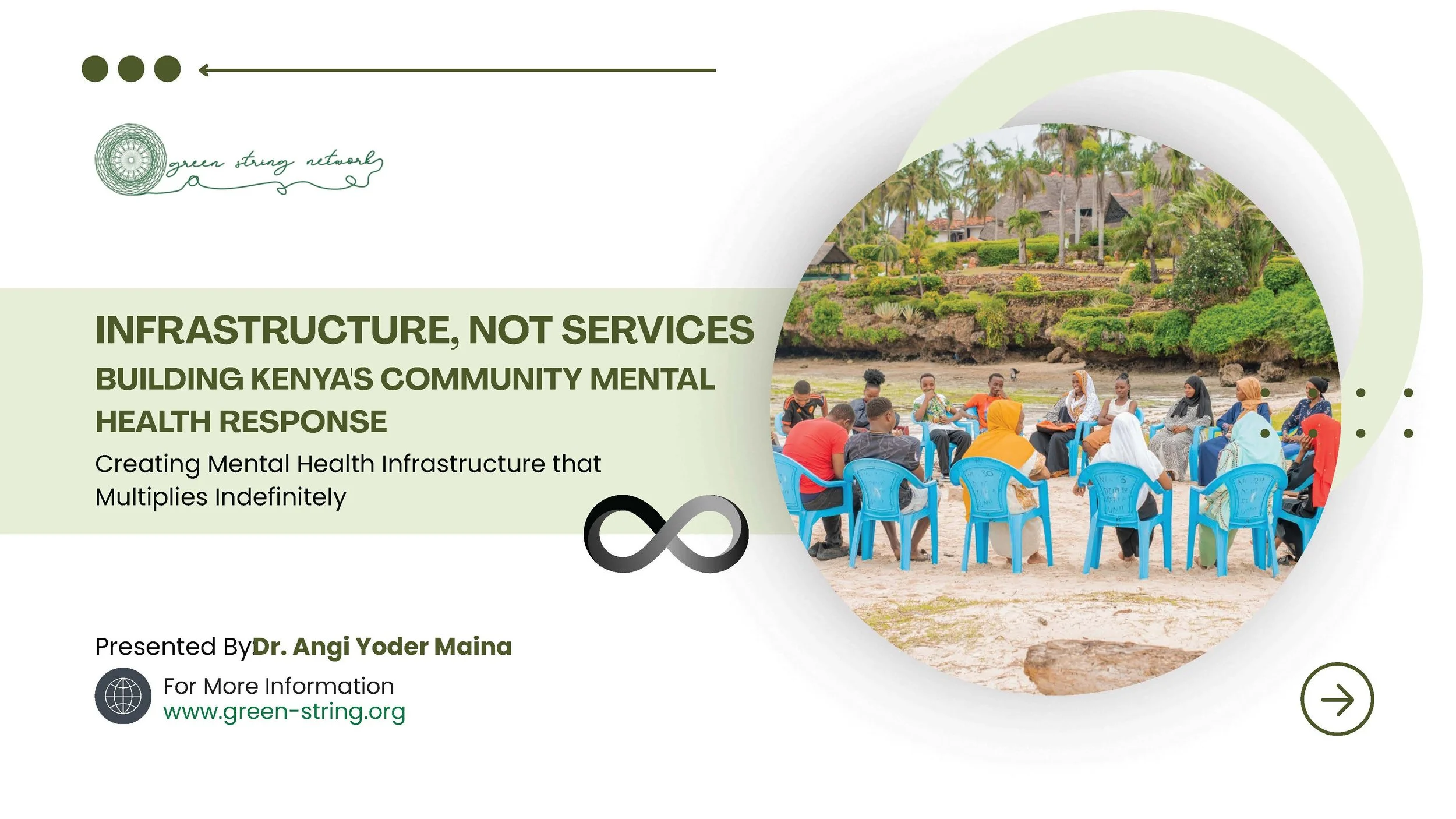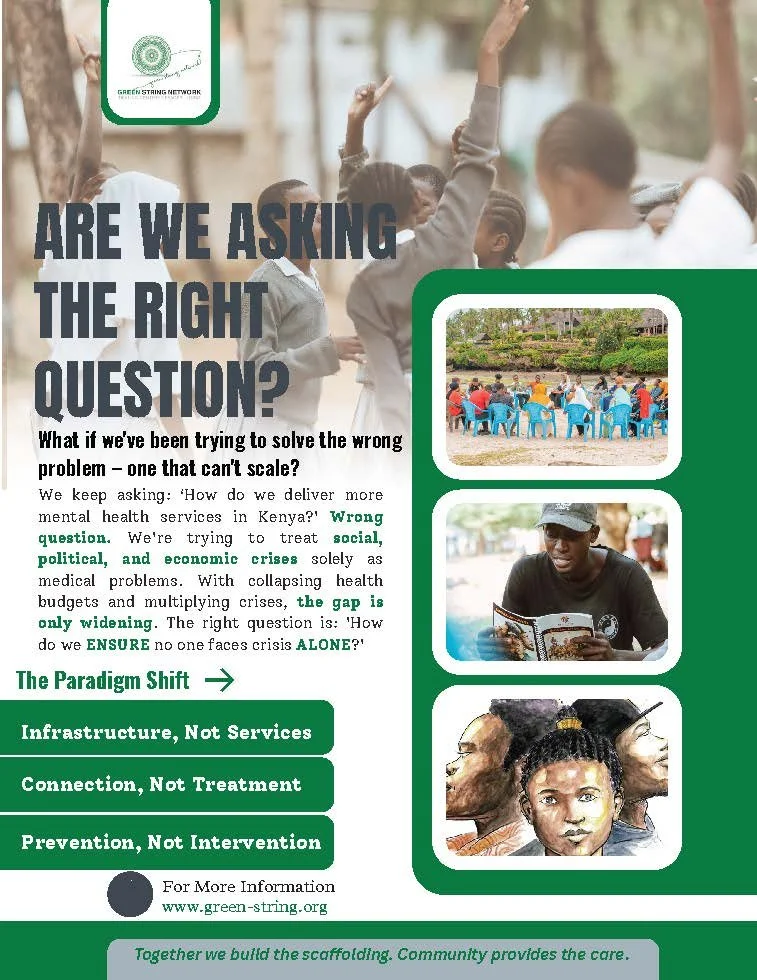
The Paradigm Shift
Are We Trying to Solve the Right Problem?
For decades, we've asked: "How do we deliver better and more mental health services?"
When we should have been asking: "How do we ENSURE no one faces crisis ALONE?"
The Question That Changes Everything
Earlier this year, in Nanyuki, Kenya, two young people called for help during mental health crises. Both died by suicide – alone, unassisted. Hospitals couldn't respond. Police lacked training and confidence.
Where at Kenya's coast, a young person experiencing severe mental distress also called for help. Within two hours, trained Circle Keepers arrived. Local Resource Facilitators coordinated through WhatsApp. Family members mobilized for ongoing support.
They're alive today.
The difference? Not more services. Not more clinicians. Infrastructure.
With only 1.4 mental health workers per 100,000 people, Kenya would need 50,000+ new clinicians and $800M annually for basic coverage. Even with unlimited funding, this is impossible. The mathematics don't work.
We're not trying to solve a service delivery problem. We're building community response infrastructure.
“The system isn't broken - it was never designed for collective crisis. When entire populations face simultaneous unemployment, violence, climate stress, and political instability, clinical services can't scale and government systems don't respond.”
— Dr. Angi Yoder Maina
Three Pillars of the Paradigm Shift
-

Infrastructure, Not Services
We stop funding programs that disappear when donors leave. Instead, we build community-owned response networks that operate permanently. Our cascade model trains Resource Facilitators who train Circle Keepers who facilitate ongoing healing circles. After initial training investment, communities sustain these networks independently - no ongoing external funding required.
The Result: Infrastructure persists. Services disappear.
-

Connection, Not Treatment
Mental health crises are fundamentally about isolation, not just illness. People don't need clinical diagnosis—they need trained neighbors who respond within hours. Healing circles build the relationships, trust, and skills that enable communities to hold people through crisis before tragedy strikes.
The Result: Response confidence replaces professional dependency.
-

Prevention, Not Intervention
Regular healing circles create ongoing community care rather than waiting for crisis. Communities develop the capacity to recognize distress early, hold space effectively, and mobilize rapidly. This isn't therapy—it's neighbors ensuring no one faces crisis alone.
The Result: Preventable tragedies are prevented.
How Communities Build Response Confidence
Without infrastructure, people freeze during crisis—waiting for professionals who often never arrive. With healing circles operating, communities recognize distress early and mobilize within hours.
Response confidence isn't about clinical expertise. It's about communities knowing they have capacity to respond.
This creates permanent nodes in a national network where communities share practices, provide mutual support, and sustain infrastructure through local resources.
From Services to Systems: What This Means
Traditional mental health approaches assume we need more clinicians, more facilities, more services. This creates dependency on external expertise and funding that inevitably ends.
We build infrastructure that:
Activates existing community capacity rather than creating dependency on external experts
Operates through local networks—churches, mosques, community organizations already embedded in communities
Uses community resources—harambees, tithes, local fundraising mechanisms
Creates permanent response networks that persist beyond any single funding cycle
Scales through replication, not expansion—other organizations can adopt the model
This is Ubuntu at scale: "I am because you are" becomes "We heal because we're connected."
See the Model in Action
Download our comprehensive materials to understand how this paradigm shift works in practice — and why it's a viable path to mental health prevention at scale.





